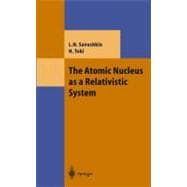
What is included with this book?
|
1 | (6) | |||
|
7 | (18) | |||
|
7 | (1) | |||
|
8 | (3) | |||
|
11 | (9) | |||
|
12 | (1) | |||
|
13 | (1) | |||
|
13 | (1) | |||
|
14 | (1) | |||
|
14 | (6) | |||
|
20 | (5) | |||
|
25 | (14) | |||
|
25 | (7) | |||
|
32 | (7) | |||
|
39 | (36) | |||
|
39 | (9) | |||
|
39 | (1) | |||
|
40 | (1) | |||
|
40 | (8) | |||
|
48 | (4) | |||
|
52 | (10) | |||
|
62 | (2) | |||
|
64 | (3) | |||
|
67 | (8) | |||
|
75 | (14) | |||
|
75 | (7) | |||
|
80 | (2) | |||
|
82 | (7) | |||
|
89 | (10) | |||
|
89 | (3) | |||
|
92 | (2) | |||
|
94 | (2) | |||
|
96 | (3) | |||
|
99 | (38) | |||
|
99 | (2) | |||
|
101 | (3) | |||
|
104 | (3) | |||
|
107 | (6) | |||
|
113 | (9) | |||
|
122 | (3) | |||
|
125 | (5) | |||
|
130 | (7) | |||
|
137 | (36) | |||
|
137 | (4) | |||
|
141 | (5) | |||
|
146 | (2) | |||
|
148 | (6) | |||
|
154 | (6) | |||
|
160 | (5) | |||
|
165 | (8) | |||
|
173 | (28) | |||
|
173 | (2) | |||
|
175 | (7) | |||
|
182 | (5) | |||
|
187 | (7) | |||
|
194 | (7) | |||
| 10 Excited Nuclear States in the Relativistic RPA Method | 201 | (18) | |||
|
201 | (2) | |||
|
203 | (3) | |||
|
206 | (2) | |||
|
208 | (8) | |||
|
216 | (3) | |||
| 11 The Equation of State of Nuclear Matter for Supernovas and Neutron Stars | 219 | (20) | |||
|
219 | (4) | |||
|
223 | (9) | |||
|
232 | (7) | |||
| 12 Alternative Relativistic Models | 239 | (22) | |||
|
239 | (7) | |||
|
246 | (7) | |||
|
253 | (8) | |||
| 13 Some Recent Applications of Relativistic Nuclear Theory | 261 | (28) | |||
|
261 | (2) | |||
|
263 | (3) | |||
|
266 | (1) | |||
|
267 | (1) | |||
|
268 | (2) | |||
|
270 | (1) | |||
|
271 | (1) | |||
|
272 | (2) | |||
|
274 | (2) | |||
|
276 | (3) | |||
|
279 | (2) | |||
|
281 | (1) | |||
|
282 | (2) | |||
|
284 | (1) | |||
|
285 | (1) | |||
|
286 | (3) | |||
| 14 Summary and Outlook | 289 | (4) | |||
| A Appendices | 293 | (30) | |||
|
293 | (3) | |||
|
296 | (1) | |||
|
297 | (2) | |||
|
299 | (1) | |||
|
300 | (2) | |||
|
302 | (2) | |||
|
304 | (1) | |||
|
305 | (1) | |||
|
306 | (1) | |||
|
307 | (2) | |||
|
309 | (9) | |||
|
318 | (5) | |||
| References | 323 | (24) | |||
| Index | 347 |
The New copy of this book will include any supplemental materials advertised. Please check the title of the book to determine if it should include any access cards, study guides, lab manuals, CDs, etc.
The Used, Rental and eBook copies of this book are not guaranteed to include any supplemental materials. Typically, only the book itself is included. This is true even if the title states it includes any access cards, study guides, lab manuals, CDs, etc.